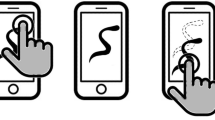Abstract
The classical view of computing positions computation as a closed-box transformation of inputs (rational numbers or finite strings) to outputs. According to the interactive view of computing, computation is an ongoing interactive process rather than a function-based transformation of an input to an output. Specifically, communication with the outside world happens during the computation, not before or after it. This approach radically changes our understanding of what is computation and how it is modeled. The acceptance of interaction as a new paradigm is hindered by the Strong Church–Turing Thesis (SCT), the widespread belief that Turing Machines (TMs) capture all computation, so models of computation more expressive than TMs are impossible. In this paper, we show that SCT reinterprets the original Church–Turing Thesis (CTT) in a way that Turing never intended; its commonly assumed equivalence to the original is a myth. We identify and analyze the historical reasons for the widespread belief in SCT. Only by accepting that it is false can we begin to adopt interaction as an alternative paradigm of computation. We present Persistent Turing Machines (PTMs), that extend TMs to capture sequential interaction. PTMs allow us to formulate the Sequential Interaction Thesis, going beyond the expressiveness of TMs and of the CTT. The paradigm shift to interaction provides an alternative understanding of the nature of computing that better reflects the services provided by today’s computing technology.
Similar content being viewed by others
Notes
We use “algorithms” in their classical sense, as found in Knuth (1968).
While Turing’s training and original contributions were mathematical, we believe that his later work classifies him as a computer scientist rather than a mathematician—perhaps the first one.
Many similar examples can be found in Cleland’s work (such as Cleland 2004).
Not surprisingly, this absence hindered the adoption of ALGOL by the industry for commercial applications.
While this seems like a minor detail, it plays a key role in PTM theory, such as when defining PTM equivalence or constructing PTM simulations, as in a universal PTM (Goldin et al. 2004).
References
ACM Curriculum Committee on Computer Science. (1965). An undergraduate program in computer science—preliminary recommendations. Communications of the ACM, 8(9), 543–552.
ACM Curriculum Committee on Computer Science. (1969). Curriculum 68: Recommendations for academic programs in computer science. Communications of the ACM, 11(3), 151–197.
Brooks, R. (1991). Intelligence without reason. Technical Report 1293. MIT Artificial Intelligence Lab. Cambridge, MA.
Cleland, E. C. (2004). The concept of computability. Theoretical Computer Science, 317(1–3), 209–225.
Cleland, E. C. (2007). In A. Olszewski (Eds.), The Church–Turing Thesis: A last vestige of a failed mathematical program (pp. 119–149).
Copeland, B. J. (1997). The Church–Turing Thesis. Stanford Encyclopedia of Philosophy (substantially revised in 2005).
Copeland, B. J. (2002). Hypercomputation. Minds and Machines, 12(4), 461–502.
Davis, M. (1958). Computability & unsolvability. McGraw-Hill.
Denning, P. (2004). The field of programmers myth. Communications of the ACM, 47(7).
Dijkstra, E. W. (1968). Go to statement considered harmful. Communications of the ACM, 11(3), 147–148.
Eberbach, E., Goldin, D., & Wegner, P. (2004). Turing’s ideas and models of computation. In C. Teuscher (Ed.), Alan turing: Life and legacy of a great thinker. Springer.
Fischer, M. J., & Stockmeyer, L. J. (1974). Fast on-line integer multiplication. Journal of Computer and System Sciences, 9(3), 317–331.
Fitz, H. (2007). In A. Olszewski, et al. (Eds.), Church’s thesis and physical computation (pp. 175–219).
Goldin, D., Smolka, S., Attie, P., & Sonderegger, E. (2004). Turing Machines, transition systems, and interaction. Information & Computation Journal, 194(2), 101–128.
Goldin, D., & Wegner, P. (2005). The Church–Turing Thesis: Breaking the myth. LNCS 3526 (pp. 152–168). Springer.
Goldwasser, S., Micali, S., & Rackoff, C. (1989). The knowledge complexity of interactive proof systems. SIAM Journal of Computing, 18(1), 186–208.
Hopcroft, J. E., & Ullman, J. D. (1969). Formal languages and their relation to automata. Addison-Wesley.
Knuth, D. (1968). The art of computer programming, Vol. 1: Fundamental algorithms. Addison-Wesley.
Kugel, P. (2002). Computing machines can’t be intelligent (...and Turing said so). Minds and Machines, 12(4), 563–579.
Lynch, N. A., & Tuttle M. R. (1989). An introduction to input/output automata. CWI Quarterly, 2(3), 219–246. Centrum voor Wiskunde en Informatica, Amsterdam, The Netherlands.
Olszewski, A., & Wolenski, J., et. al. (Eds.) (2006). Church’s thesis after 70 years. Ontos-Verlag.
Papadimitriou, C. H. (1995). Database metatheory: Asking the big queries. In Proceedings of the 14th ACM Symposium on Principles of Database Systems, San Jose, CA.
Rice, J. K., & Rice J. R. (1969). Introduction to computer science: Problems, algorithms, languages, information and computers. USA: Holt, Rinehart and Winston.
Russell, S., & Norveig, P. (1994). Artificial intelligence: A modern approach. Addison-Wesley.
SIGACT News. (2004). ACM Press, p. 49.
Sieg, W. (2005). Computability and discrete dynamical systems. LNCS 3526 (pp. 440–440). Springer.
Sipser, M. (2005). Introduction to the theory of computation (2nd ed.). PWS Publishing Company.
Turing, A. (1936). On computable numbers, with an application to the Entscheidungs problem. Proceedings of the London Mathematical Society, 42(2), 230–265; A correction, ibid, 43, 544–546.
van Leeuwen, J., & Wiedermann, J. (2000). The turing machine paradigm in contemporary computing. In B. Enquist & W. Schmidt (Eds.), Mathematics unlimited—2001 and beyond. LNCS. Springer-Verlag.
Weger, P. (1968). Programming languages, information structures and machine organization. McGraw-Hill.
Wegner, P. (1997). Why interaction is more powerful than algorithms. Communications of the ACM, 40, 80–91.
Wegner, P. (1998). Interactive foundations of computing. Theoretical Computer Science, 19(2), 315–351.
Wegner, P. (1999). Towards empirical computer science. The Monist, 82(1), 58–108.
Wegner, P., & Goldin, D. (2003). Computation beyond Turing Machines. Communications of the ACM, 46, 100–102.
Acknowledgements
We sincerely thank the anonymous reviewers for their comments, which were very helpful in revising this paper.
Author information
Authors and Affiliations
Corresponding author
Rights and permissions
About this article
Cite this article
Goldin, D., Wegner, P. The Interactive Nature of Computing: Refuting the Strong Church–Turing Thesis. Minds & Machines 18, 17–38 (2008). https://doi.org/10.1007/s11023-007-9083-1
Received:
Accepted:
Published:
Issue Date:
DOI: https://doi.org/10.1007/s11023-007-9083-1




